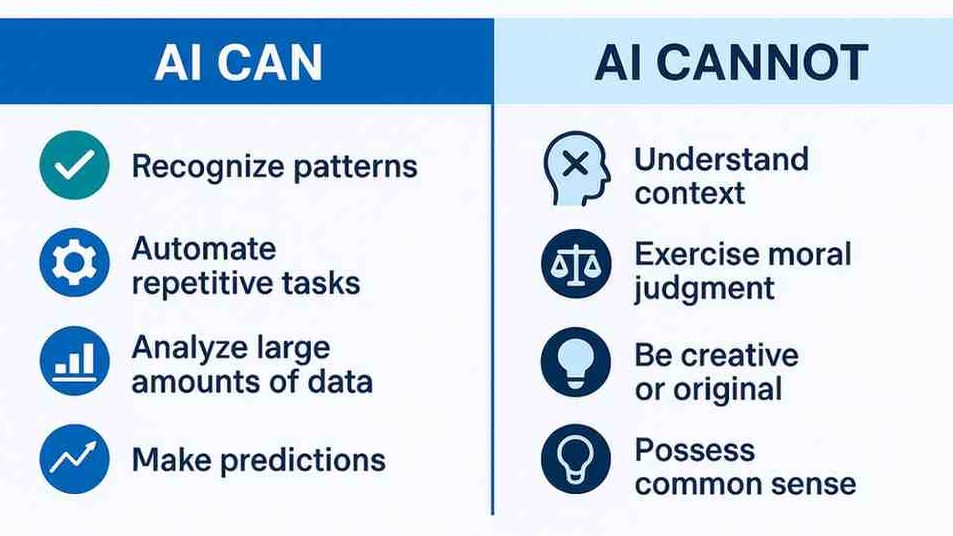Artificial intelligence has become an essential part of modern work, from automating administrative tasks to generating creative ideas. Businesses and individuals alike now rely on AI to save time, reduce costs, and improve accuracy. Yet, as powerful as these tools are, they must be used thoughtfully to ensure that human judgment remains at the center of every important decision.
When AI is used without oversight, it can lead to errors, ethical concerns, and decisions that don’t reflect real-world nuance. The goal isn’t to replace human thinking, but to combine technology’s efficiency with people’s empathy and critical reasoning. Knowing how to strike that balance is what separates responsible users from careless ones.
Table of contents
Keep Accountability at the Core
AI systems can analyze data faster than any person, but they don’t understand context or emotion. That’s why accountability must always remain with the human decision-maker. Even when AI assists with hiring, performance reviews, or risk assessments, the final decision should be reviewed by a person who can fairly interpret the results.
Employers should also understand that regulations apply to AI-assisted decisions in the workplace. If a company uses AI to help evaluate candidates and a decision results in an action such as rejecting a job application, that could constitute adverse action.
This is why transparency and human review are so important; they prevent automated decisions from leading to unfair outcomes or legal issues.
Understand What AI Can and Cannot Do.

AI tools are designed to process information, not to reason like people. They can generate text, detect patterns, and predict outcomes from data, but they can’t always determine whether that data is biased or incomplete. Human oversight is critical to interpret AI results responsibly.
For example, an AI program that screens job applications might inadvertently favor specific keywords, missing talented candidates who use different phrasing. Similarly, a customer service chatbot may give an inappropriate response if it misunderstands tone or context.
By understanding these limitations, users can step in when the system’s logic falls short.
Use Data Ethically and Transparently
AI depends on data, and data depends on trust. When using AI systems, organizations should make sure that personal information is collected, stored, and analyzed ethically. Users should also be transparent about when and how AI is being used, especially when it affects customers or employees.
Federal and state guidelines in the US emphasize fairness and privacy in automated decision-making. Following these principles not only prevents compliance issues but also helps build confidence in technology.
The public is far more likely to accept AI when they know it’s being used responsibly and with oversight.
Keep Human Values in the Process
AI can process vast amounts of data, but it lacks empathy, intuition, and moral understanding. Those are uniquely human qualities and they matter. When people rely too heavily on AI, they risk overlooking the subtle human factors that define good judgment, such as compassion, fairness, and cultural awareness.
To avoid that, every AI-driven process should include a “human in the loop.” This means that someone reviews, interprets, and approves the system’s output before it’s acted upon. It’s not just about catching mistakes; it’s about ensuring that decisions reflect values as well as data.
Educate Teams on Responsible AI Use
AI literacy is becoming a necessary skill across all industries. Employees should be trained not only in how to use AI tools, but also in how to question them. Critical thinking and skepticism help people recognize when technology may be leading them astray.
Businesses can encourage this mindset by offering workshops, clear guidelines, and open discussions about AI ethics. Understanding how algorithms work and where they can go wrong builds confidence and prevents misuse.
The more people understand these tools, the more effectively they can integrate them into daily work without losing their judgment.
A Future Built on Balance
AI will only become more advanced, but its success depends on how wisely it’s used. The right balance between automation and human judgment ensures progress without losing perspective.
Whether in business, education, or daily life, the goal is not to surrender decisions to algorithms but to use them as tools that strengthen our own reasoning.
As society grows more reliant on technology, the measure of progress won’t be how much AI can do on its own, but how well people can guide it. Responsible use keeps the human element alive, thoughtful, ethical, and ultimately in control.
Artificial intelligence has become an essential part of modern work, from automating administrative tasks to generating creative ideas. Businesses and individuals alike now rely on AI to save time, reduce costs, and improve accuracy.
Yet, as powerful as these tools are, they must be used thoughtfully to ensure that human judgment remains at the center of every important decision.
When AI is used without oversight, it can lead to errors, ethical concerns, and decisions that don’t reflect real-world nuance. The goal isn’t to replace human thinking, but to combine technology’s efficiency with people’s empathy and critical reasoning.
Knowing how to strike that balance is what separates responsible users from careless ones.











